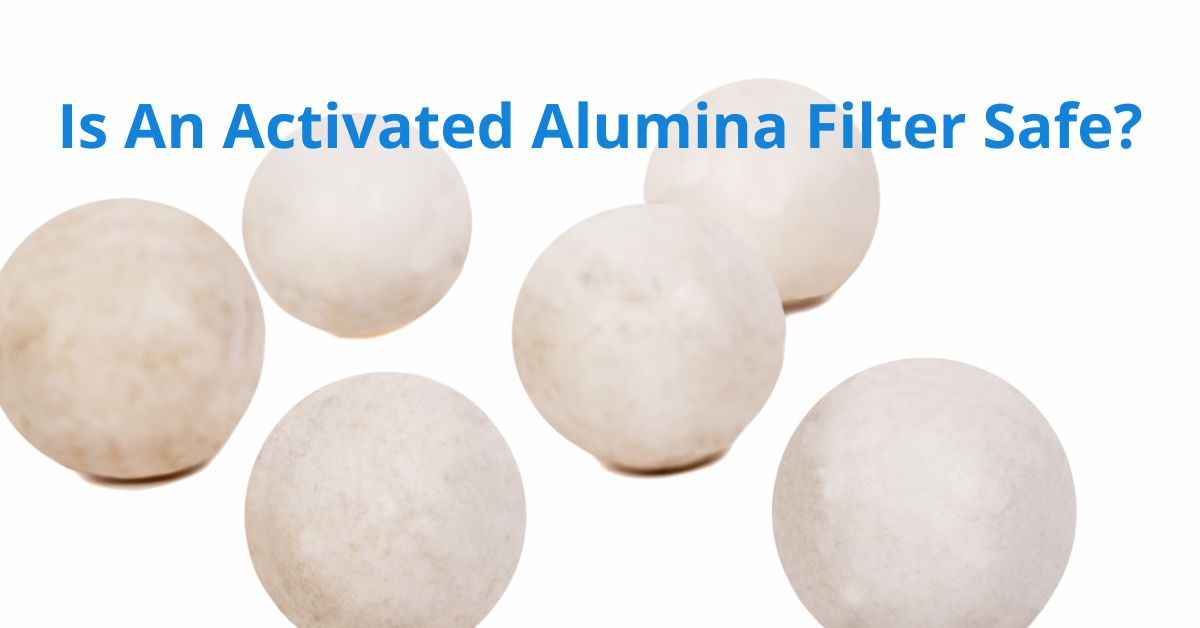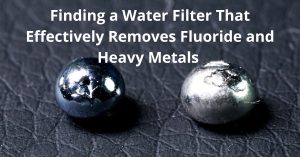
Is Activated Alumina Filter Safe?
As someone who’s spent years exploring different water filtration methods, I often get questions about activated alumina filters. When choosing between undersink or benchtop water filters, it’s essential to understand how activated alumina and other filtration media work to make an informed decision.
Is Activated Alumina Hazardous?
Let’s first understand how activated alumina is made. It is made through a process that converts aluminium hydroxide into a material with a large surface area.
- The ram material used is a compound called aluminium hydroxide which contains aluminium and oxygen.
- The aluminium hydroxide is heated up, in a process called calcination, to around 400-500°C.
- During the heating process water is driven out of the material, and as a result, lots of tiny pores are formed. THese pores give activated alumina its special ability to trap contaminants like a sponge.
- After heating, what’s left is activated alumina with a very large surface area due to all the pores (an impressive 200 m2/g).
The aluminium in activated alumina will not leach into your water if used in a water filter and here is why:
During the manufacturing process, aluminum hydroxide is transformed into aluminum oxide (Al₂O₃), which is a very stable compound. The aluminum atoms are tightly bonded within this structure, making it chemically stable and preventing them from dissolving into water. This is what makes activated alumina safe to use in water filtration.
Additionally, water filters using activated alumina are often designed to keep the water’s pH level neutral, which further ensures that the aluminum stays locked in the material and doesn’t leach into your drinking water. So, even though activated alumina contains aluminum, it’s in a form that won’t end up in your filtered water.
Here’s what I’ve learned through my research and experience:
- Activated alumina is a certified safe filtration medium.
- Regulatory bodies specifically approve it for water treatment.
- When used in proper filtration systems, it doesn’t leach harmful substances into water.
Your safety is paramount when choosing a water filter. Whether you’re looking at a benchtop water filter or a comprehensive reverse osmosis water filter, knowing the facts about activated alumina can help you make the right choice.
Is Activated Alumina The Same As Aluminium?
This is one of the most common questions I encounter, and the answer is a definitive no. Let me break down the key differences:
Composition: Activated alumina is aluminium oxide (Al2O3), while aluminium is a pure metal element.
Structure: Activated aluminium has a highly porous structure, unlike solid aluminium.
Properties: While aluminium can dissolve in water under certain conditions, properly prepared activated alumina is extremely stable.
Think of it this way: table salt (sodium chloride) contains chlorine, but it’s completely different from the chlorine gas used to disinfect pools. Similarly, activated alumina is very different from aluminium metal.
How Activated Alumina Works in Water Filters
Activated alumina has proven to be particularly effective with various filtration systems at removing/reducing:
- fluoride from water
- arsenic levels
- other specific contaminants like selenium and lead
You’ll often find activated alumina in:
- Undersink water filter system units
- Some benchtop water filter models
- Specialised filtration stages in reverse osmosis water filter systems
Making an informed decision
When considering a water filter with activated alumina, here’s what I recommend looking for:
- NSF/ANSI certifications
- Proper maintenance schedules
- Compatibility with your water conditions
I’ve found that the best setups often combine multiple filtration methods. For instance, an undersink water filter system might use activated alumina alongside other media for comprehensive filtration.
My Personal Experience
Having tested and used various water filters, I can say that activated alumina-based systems have some distinct advantages. They’re highly effective for specific contaminants and they’re cost-effective compared to some alternatives.
However, like any filtration medium, they’re not perfect for every situation. I always recommend considering your specific water quality issues when choosing a filter.
Alternative Options
While activated alumina is excellent for certain applications, you might also consider:
Reverse osmosis water filter systems for the most comprehensive filtration
Carbon-based filters for other contaminants like chemicals and bacteria
Multi-stage systems that combine different filtration methods
The Bottom Line
After years of experience with various water filtration systems, I can confidently say that activated alumina, when used properly, is a safe and effective filtration medium. The key is choosing a high-quality system and maintaining it correctly.
Whether you ultimately choose a benchtop water filter, an undersink system, or a reverse osmosis unit, understanding the role and safety of activated alumina can help you make a better decision for your home water treatment needs.
The best water filter is one that effectively addresses your specific water quality issues, fits your lifestyle and space limitations and is made by a reputable manufacturer with proper certifications.
If you’re still unsure, I always recommend getting your water tested and consulting with a water treatment professional to find the best solution for your specific situation.



